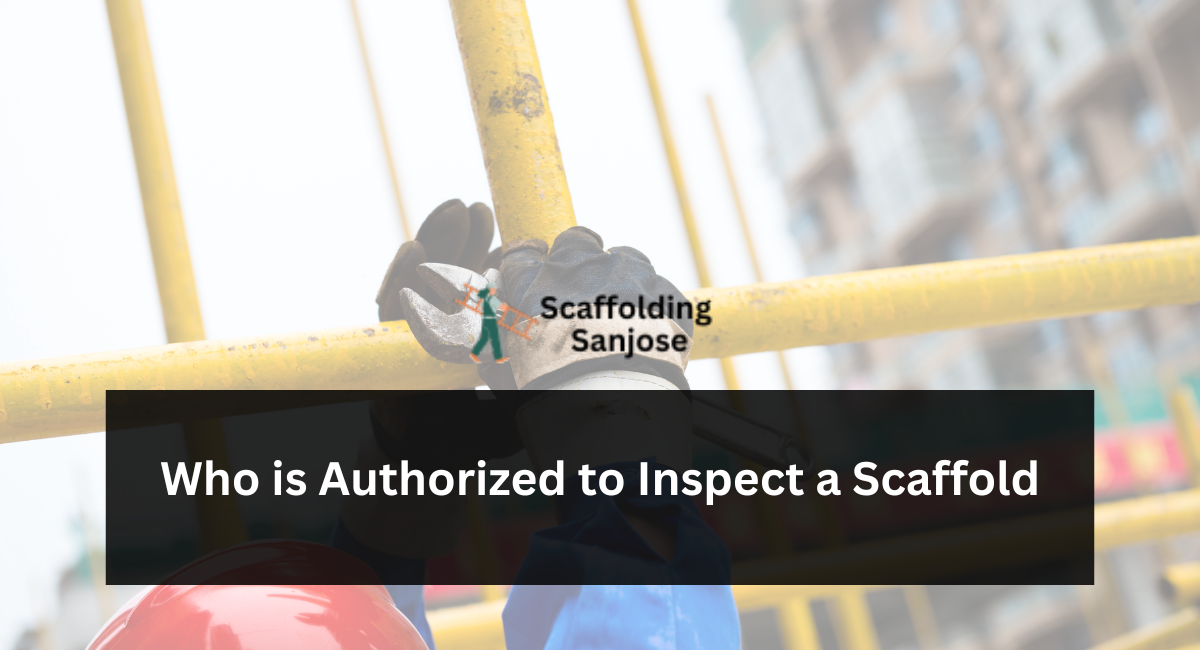Scaffold inspections are an integral part of job site safety. A knowledgeable person should thoroughly examine every scaffold before every shift in which it is utilized and immediately after any event that could compromise its structural integrity.
Scaffolding accidents usually involve structural instability or overloading. Luckily, these mishaps are almost always preventable.
Competent Person
Competent persons are employees appointed to assess conditions on a job site. This expert understands scaffolding-specific safety details such as leveling, stability, weight/type restrictions that apply, guard rails, etc. To maximize safety at your worksite and to preserve worker productivity for maximum productivity. Identify these individuals within your company and work on developing them into skilled experts capable of evaluating hazards accurately.
To qualify as competent, an individual must first pass a training course that comprehensively addresses scaffolding safety. Preferably, this training should take place internally. Still, if an external provider must train your employees, they must possess a valid CISRS card.
An authorized person should inspect scaffolds before each work shift, after any event that could compromise their structural integrity, and every time they are moved or altered in any way. They should use a checklist to keep track of these inspections to ensure no details are overlooked and to reduce risks during construction projects. Scaffold inspections are essential in avoiding serious accidents during these crucial processes.
Supervisor
Scaffoldings must be inspected by qualified individuals – competent individuals – who possess the knowledge, training, and experience required to recognize potential hazards on site and implement prompt corrective measures that address them effectively. This may involve de-energizing power lines near scaffolds, clearing away tools or materials within 10 feet, as well as making sure the type of scaffold chosen meets all loads, worker requirements, and weather conditions at the site.
Scaffold inspections should take place prior to each shift and following events that could compromise its integrity, using checklists as an efficient means of recording inspection results and preventing incidents from arising.
SafetyCulture (formerly iAuditor) app offers an example of an inspection checklist, available free to all users without subscription fees. When inspecting scaffolds, important parts include checking footings for levelness and support capacity, as well as inspecting mud sills and base plates to make sure they can support their weight.
Owner
Scaffolds are temporary structures used by construction workers to access hard-to-reach areas. Although inspections must occur prior to and during use, accidents still happen often — an estimated seven out of every ten scaffold incidents result in lost labor hours and worker compensation claims.
Due to various factors that could compromise its integrity, such as unintended vehicles or windstorms, scaffolds must be designed correctly with maximum intended load capacities in mind and adhered to.
An inspection checklist makes it simple for employees to identify and record potential hazards before they affect safety, so a competent person can then take necessary steps such as tagging scaffolding for future reference or performing all required inspections. This process also ensures all inspections are carried out as needed.
Contractor
OSHA defines contractors as those trained in specific tasks such as erecting, dismantling, moving, and altering scaffolds, inspecting employees, training employees on safety regulations in the workplace, and assuring compliance.
Scaffolds should be thoroughly inspected both prior to initial use and regularly throughout their use in order to detect hazards that could lead to accidents, such as structural damage or unanticipated weight loads on scaffolds. Inspection can help identify risks that could result in accidents, such as structural compromises or weight overloading of materials on.
An experienced person must thoroughly inspect all components of a scaffold, including its legs, posts, and frames. They should ensure the structure is at least 10 feet away from power lines and does not interfere with exits, egress paths, or fire alarms. Furthermore, footings must be level, sound, firm, and capable of supporting their weight, as well as checked for bends, holes, cracks welding, spatter splatter, or non-compatible parts.
Conclusion
Determining who is authorized to inspect a scaffold is crucial for ensuring safety and compliance with regulations. Typically, competent and trained individuals, such as qualified scaffold inspectors or designated personnel with relevant expertise and knowledge, are authorized to conduct scaffold inspections. This authorization ensures that reviews are thorough, covering structural integrity, stability, and adherence to safety standards. By entrusting inspections to qualified professionals, organizations can maintain a safe work environment, minimize risks, and address potential scaffold issues promptly, promoting the safety and well-being of workers on construction sites.

